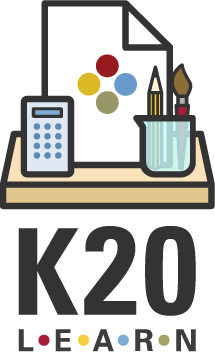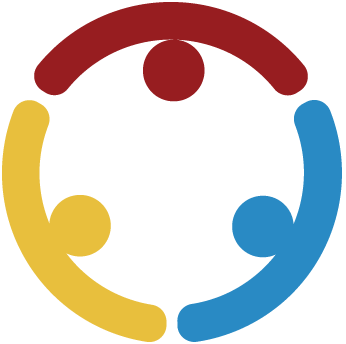Summary
The Oklahoma City Community College (OCCC) Visual Arts College2Career Forum showcases three art pathways offered at the OCCC campus: Traditional Art, Digital Cinema Productions, and Digital Media Design programs. Students will interact with OCCC faculty and staff within their respective visual arts disciplines. Afterward, students will hear about admission and enrollment from an OCCC Recruitment & Admissions team member.
Essential Questions
What steps do I need to take to reach my future goals?
How can I apply the career information to my current postsecondary plans and academic opportunities?
Snapshot
Engage
Students recall what they know about the featured profession and their career field with a Fist to Five activity.
Explore
Students interact with OCCC PSI faculty/staff and career-specific professionals with hands-on activities.
Explain
Students Think-Pair-Share their thoughts on the activities they participated in.
Extend
Students explore external resources to examine further career opportunities.
Evaluate
Students reflect on their learning using the Mirror, Microscope, Binoculars strategy.
Materials List
Road Map to Success handout (attached; one per student)
Visualize Your Career handout (attached; one per student)
Name badges (optional)
T-shirts (optional)
Pens/pencils
Electronic devices (optional)
Learning Goals
Explore a PSI (OCCC’s Visual Arts Programs).
Connect career information to current academic opportunities and plans for postsecondary opportunities.
Collaborate with career professionals while completing hands-on activities.
Engage
10 Minute(s)
Prior to facilitating any forum event, see our College2Career Forum: How to Guide for more information on how to set up a specific forum.
Once you have arrived on site, be sure to check that your mode of transportation has the appropriate parking pass or availability as needed. Walk with your students to the site and meet your career professional(s).
Before students hear from the professional(s), provide a brief welcome and overview of the day. This overview can include “housekeeping items” such as restroom locations, where to store bags, and electronic device policies.
Next, have students use the Fist to Five strategy to gauge what they already know about the careers, institution, and/or degree field they will explore during this visit. Tell students to hold up:
0 fingers (a fist) if they know nothing at all
1 finger if they have a little understanding
2 fingers if they know something but need clarification
3 fingers if they have basic knowledge
4 fingers if they have an advanced understanding
5 fingers if they are an expert and can teach others
Ask students to share-out their prior knowledge if they reflect 3 to 5 and things they want to learn if they reflect 0 to 2. Repeat the sharing-out process as often as needed.
Once students have shared their experiences, move on to introducing the career professional(s).
Explore
90 Minute(s)
What to expect:
On arrival, schools will park their buses in Lot D and enter the facilities through the Visual and Performing Arts Center Theater Atrium (Entry VPA 4). Here, schools will be greeted and guided to their respective areas based on their assigned groups. This initial gathering point sets the stage for an organized and welcoming start to the program.
Each group will then proceed to their designated locations: Traditional Art, Digital Cinema Productions, and Digital Media Design. The Traditional Art program offers students a deep dive into various classical art techniques, including painting, drawing, and sculpting. The Digital Cinema Productions program will explore the world of filmmaking. This includes hands-on experience with state-of-the-art equipment, learning about pre-production, production, and post-production processes. The Digital Media Design program focuses on the creation and design of digital content. Students will learn about graphic design, web design, digital illustration, and multimedia production. Afterward, students will listen to an OCCC Recruitment & Admissions team member about getting admitted and enrolled at OCCC.
Explain
15 Minute(s)
What to expect:
Have students use the instructional strategy Think-Pair-Share with someone who had participated in a different aspect of the activity that they had. Students should turn and talk to their neighbors about the part of the activity they had just engaged in. Students will also have the opportunity to ask questions about the degree program and/or career.
Extend
20 Minute(s)
Usually, professionals give a recruiting pitch about how students can attend their PSI (i.e. cost, housing, scholarships, etc.) or pursue job opportunities (i.e. internships, “on the job training,” etc.) while students eat lunch. Provide a space for students to ask any clarifying questions.
If time and resources permit, pass out the attached Road Map to Success handout to each student. Direct them to the https://www.mynextmove.org/ website or the K20 career clusters resource (https://learn.k20center.ou.edu/search?type=student-resources) and have them follow the directions on their handout to find what they need. Explain that they should complete the handout based on their individual searches. If students need help, encourage them to research careers similar to those of the presenting professional(s) or those within the same career cluster.
Evaluate
20 Minute(s)
After returning to your campus and after participating in the College2Career Forum event, use the Mirror, Microscope, and Binoculars strategy to have students reflect on the experience. Pass out the attached Visualize Your Career handout to each student and allow them time to reflect on what they learned. Explain the following in as much detail as needed:
Mirror (self-reflection): How do I feel about the career(s) I experienced today? Has this experience helped me think about what I want to do after high school?
Microscope (close inspection/details): What are some of the smaller details of the career(s) I experienced today that I hadn’t thought about before? How do my skills fit with this/these position(s)?
Binoculars (bigger picture): Can I see myself in this career field later in life? How does this field play a role in the bigger world?
Research Rationale
As research continues, it is becoming increasingly evident that simply telling students about PSI opportunities or career fields isn’t sufficient. Teachers need to give students impactful, relatable, and engaging experiences so that they can actively explore these options. Not only do these experiences help students explore future opportunities, but they can also lead to career success later in life. Research shows a strong correlation between career success later in life and job shadowing and workplace visits as a teen.
One study found that Canadian students who made a workplace visit by age fifteen were 4% less likely to be NEET (Not being in Education, Employment, or Training) than their peers at age twenty-five (Covacevich et al. 2021). The same study found that Korean students who made the same type of workplace visits were 1.23 times more likely not to be NEET than those who did not take a visit.
Work-Based Learning
In making college and career decisions, Work-Based Learning (WBL) opportunities can provide secondary students with experience, clarity, and increased self-efficacy. Field-based learning is a powerful tool in helping students to understand the core concepts better and to raise their enthusiasm (Janovy & Major, 2009; Manzanal et al., 1999, as cited in Pereira & Gheisari, 2017). These experiences also enable students to interact with professionals and perceive fieldwork in a way that is unattainable in a traditional school setting. A research project by Pereira and Gheisari (2017) studied faculty perceptions of the effectiveness of construction site visits during construction courses. The researchers found that faculty members believe observing the construction environment is critical for the students (Pereira & Gheisari, 2017). With student benefits and faculty acknowledgment, WBL can provide a compelling experience for students.
Another WBL study of eleven low-income ethnic minority secondary students aimed to gauge the impact of a school’s WBL program. Through data analysis of student interviews, the study revealed that the WBL program promoted hope for their future academic and career success as well as support and mentorship through workplace supervisors within the program (Medvide et al.; M. E., 2020). This hope, support, and mentorship give students—especially low-income students whose backgrounds and lived experiences may hinder them—the self-efficacy to reach their full potential.
Hands-on Educational Experiences
Several research projects prove that hands-on educational experiences can positively impact students' academic and work-related outcomes. One such study followed a group of Australian secondary school students through a year-long science program. This program aimed to strengthen students' science skills in data analysis, experimentation, and scientific writing through current, hands-on research within the context of a significant worldwide health issue (Puslednik & Brennan, 2020). The research team found that the intervention reflected in students’ mean score of knowledge growth—per a self-assessment survey—rose considerably. They also found, through VALID 10 testing, that 84% of intervention students would have scored lower on their tested science knowledge, problem-solving, communication, and planning skills than the control group's mean score (Puslednik & Brennan, 2020).
Another similar study evaluated the effectiveness of a hands-on learning experience in cancer research for 20 secondary students. After a two-week science summer camp at The University of the Pacific, the researcher found that 83.33% of the students were interested in participating in another hands-on science learning experience, and the same number reported increased interest in attending The University of the Pacific as their Postsecondary Institution (PSI) (Argueta et al, 2020). These results showcased the impact and importance of hands-on learning for high school-aged students when considering their future academic and career endeavors.
Resources
Argueta, C., Vargas, J. S., Parkins, A. S., Ren, J., & G. Pantouris. (2023). Hands-on methods to educate high school students about cancer research. 100(6), 2312–2319. https://doi.org/10.1021/acs.jchemed.3c00141
Covacevich, C., Mann, A., Santos, C., & Champaud, J. (2021). Indicators of teenage career readiness: An analysis of longitudinal data from eight countries. OECD Education Working Papers, No. 258, OECD Publishing, Paris. https://doi.org/10.1787/cec854f8-en
K20 Center. (n.d.). Fist to five. Strategies. https://learn.k20center.ou.edu/strategy/68
K20 Center. (n.d.). Mirror, microscope, binoculars. Strategies. https://learn.k20center.ou.edu/strategy/3020
K20 Center. (n.d.). Student resources. https://learn.k20center.ou.edu/search?type=student-resources
K20 Center. (n.d.). Think-pair-share. Strategies. https://learn.k20center.ou.edu/strategy/139
Medvide, M. B., & Kenny, M. E. (2020). Hope in the lives of low-income students of color: A qualitative study of experiences in a work-based learning program. Journal of Career Development, 089484532093743. https://doi.org/10.1177/0894845320937430
Pereira, Eiris, R., & Gheisari, M. (2017). Site visit application in construction education: A descriptive study of faculty members. International Journal of Construction Education and Research, 15(2), 83–99. https://doi.org/10.1080/15578771.2017.1375050
Puslednik, L., & Brennan, P. C. (2020). An Australian-based authentic science research programme transforms the 21st century learning of rural high school students. Australian Journal of Education, 000494412091989. https://doi.org/10.1177/0004944120919890
U.S. Department of Labor. (n.d.). My next move. https://www.mynextmove.org/


